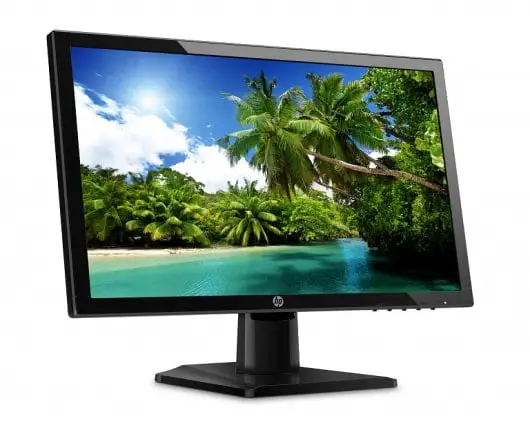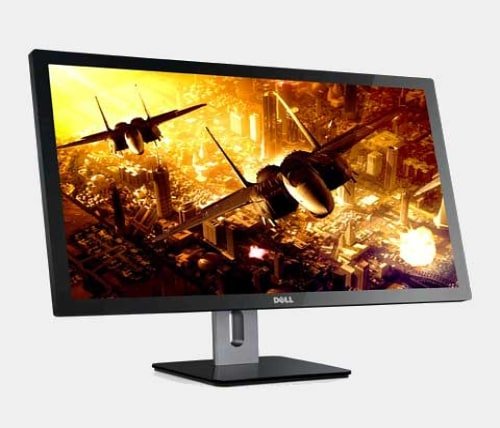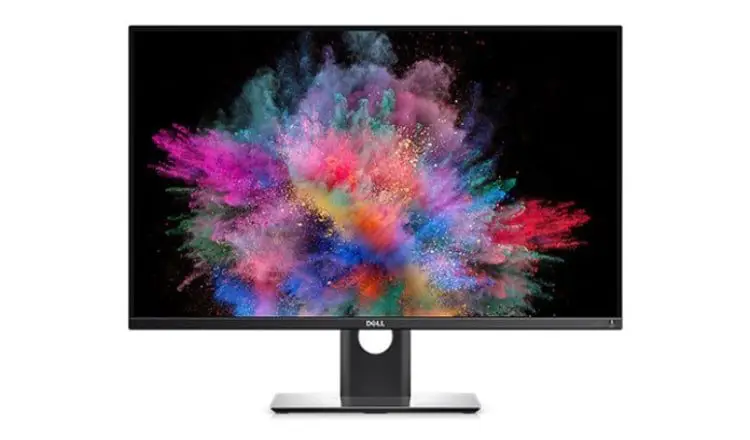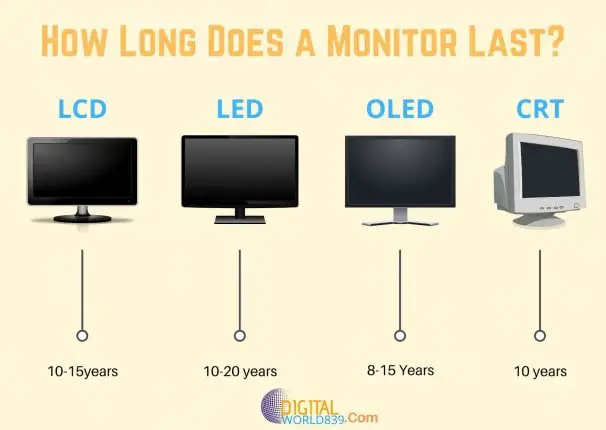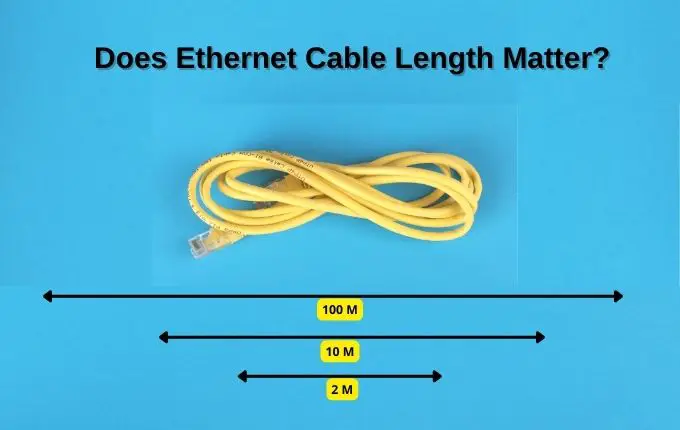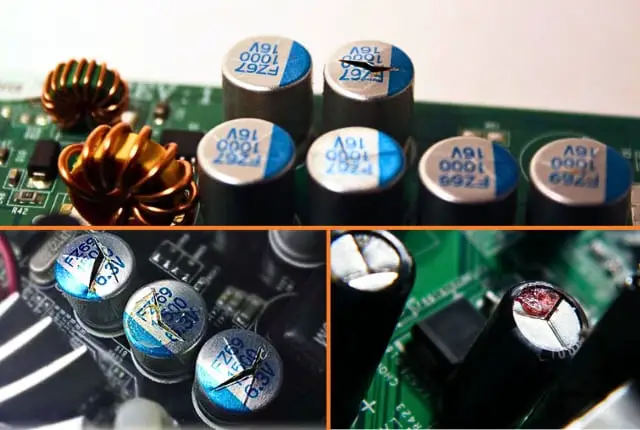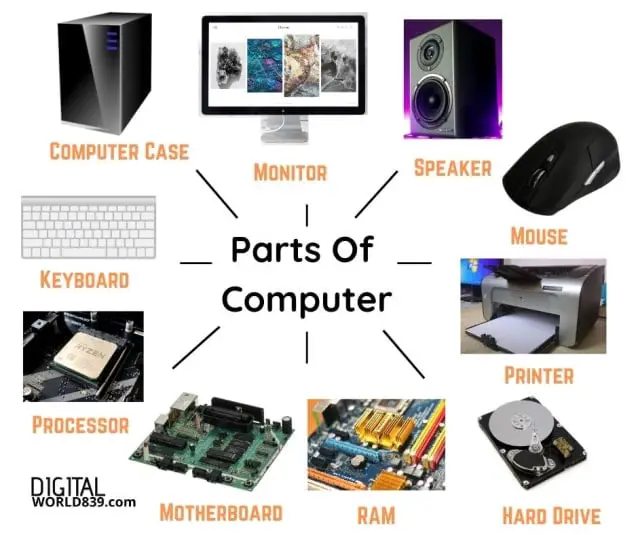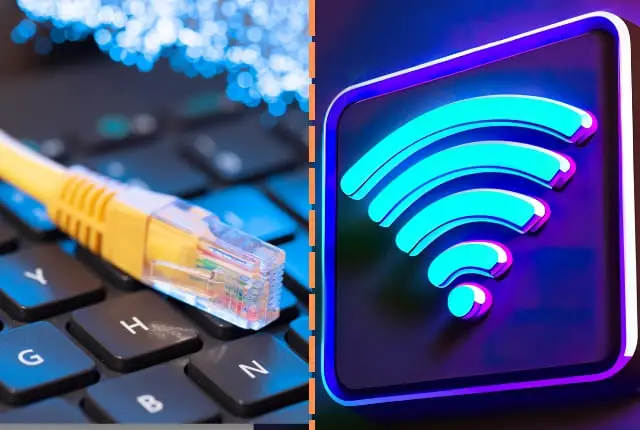Have you ever thought How long does a monitor last? or wondered what the lifespan of a monitor is? After all, monitors are the significant peripheral device of a PC.
Furthermore, much of the time it possibly winds up changing for another one when we need a new one, with a bigger screen and/or with a higher resolution. In this article, I will answer this question, which we are sure that more than one of you have ever asked yourself.
If you’re thinking about buying a new LCD monitor in today’s technological progress, though, you might be wondering how long they last. At the end of the post, you will find tips for extending the life of your Monitor.
How Long Does a Monitor Last?
Let’s begin to know How long does a monitor lasts? or the life of different types of monitors.
1. lifespan of LCD Monitor
LCD monitors usually have a lifespan of 30,000 to 60,000 hours of use, which equals 10 to 20 years if the monitor is used for eight hours a day. It has a longer life than the plasma and CRT monitors and is somewhat shorter than that of current LED Monitors.
These monitors have a flat-screen and use a liquid crystal solution between two layers of polarizing material for their light source.
For instance, If you turn on the power for a long time in a day after purchasing the monitor, you can continue to use it for 1095 to 1825 days without breaking, and it takes about 3 to 5 years.
In general, I think that many people turn off the power when they are not using a computer, so if you use it for 12 hours a day, it will take about 10 to 15 years.
These numbers may fluctuate slightly, depending on the model and manufacturer, but the fact remains. After this period, the screen brightness drops noticeably, dark areas appear in the corners, and the backlight tint turns yellow.
To ensure your LCD display’s lifespan, you definitely need to adjust the contrast setting (an important factor) for the conditions under which you view your LCD display. Higher light levels and contrast levels affect the life expectancy of the LCD monitor and vice versa.
2. Lifespan of LED Monitor
A LED monitor’s lifespan range between 80,000 to about 120,000 hours. Which is equivalent to about 20 years, if we use 8 hours a day, depending on its materials and manufacturers.
LED monitors that are being sold right now in stores to come with the latest screen materials and technology. Their main advantage if they live longer than LCDs, and CRTs by providing bright and vivid display features that are energy efficient.
At the same time, the obvious drawback is the price, LED monitor is a bit expensive compared to the same sized TV.
A significant factor that influences the life span of a LED monitor is the conditions like Usage, Temperature, and Brightness. The harsher the use, the higher the temperature and brightness can reduce the lifespan, and the less you can expect a LED to last.
That’s why it is recommended to properly optimized and well adjust the brightness and usage as per the need and let LED works in optimal conditions to enhance life expectancy.
Bonus Tip ~ Do not use hard surface rubbing material to clean the monitor screen.
3. Lifespan of CRT Monitor
A typical CRT monitor only lasts for about 20,000 to 30,000 hours of use, which equates to 10 years if the monitor is run for eight hours a day. At this point, it must be replaced or repaired (if possible).
The CRT monitor is old since they were used old technology of cathode-ray rubes that illuminate the corresponding pixels ( typically old backlighting technology) leads to less efficiency, often heavy, bulky, and fragile units. result in a short lifespan.
If you’ve ever owned a CRT monitor before, you’re probably well aware of often heats made it a relatively short lifespan.
Today the world is moving with great speed along alongside innovative progress. Also, no one will surprise anyone with a thin LCD monitor or TV. They can be seen in almost any office. Many have already swapped out their old fat CRT TVs for new thin LCD panels. Laptops also have an LCD screen, so this also applies to them.
4. Lifespan of OLED Monitor
The life expectancy of OLEDs really depends upon your usage. If you play a lot of games or uses it constantly all day, the organic components degrade over time and it will not be a very long life, as it can get burn-in.
In fact, there is no exact answer to the lifespan of OLED. However, as per the report and research, the OLED monitor can have a lifespan of 100,000 hours. And it can be last long about 8 – 15 years if you use it 8 hours a day.
Bottom Line: How Long Monitor Last
- LCD Monitors: 10-15 Years,
- LED Monitors: 10-20 Years,
- OLED Monitors: 8-15 Years,
- CRT Monitors: 10 Years.
What influences the life of monitors?
The entire half-life of a computer monitor depends, to a great extent, on the type of light source it uses and the number of hours we use it per day.
One should use the monitor’s “Power Saving features” and “standby mode” and always turn off your TV, even when you go out for coffee in order to extend its life. These features turn off the monitor’s light source when not in use.
How often should you replace your computer monitor?
There isn’t any certain time period as to when a monitor should be replaced. But, it is worth it when you notice the degradation of the monitor in the form of dead pixels, dim and greenish image screens.
In fact, the monitor usually lasts 5 years or more, so it will be good unless you want to upgrade to the latest monitor for eye caring with a higher resolution and faster variant.
Can the computer monitor be repaired?
It may be repaired depending on the failure. However, many people opt for a new one instead of sending it out for repair, in general. It is the better option to buy a new computer monitor as cost performance by considering the time and cost of repairs.
Also, if you have purchased a desktop PC with a monitor set, the life of the main unit may come to an end even if you repair the monitor. So, it is better to buy it again as a set to improve the stability of your PC life.
Signs when the life of the monitor is ending:
When the life of the monitor is near to end, the following signs will appear:
In most cases, visual abnormality like “Stuttering” and “flickering” is a very common sign of understanding the end of the monitor’s life. When it reaches the end of its life, the screen will disappear even when the power is turned on.
How to extend the monitor life?
It is enough to follow a couple of basic rules so as for the monitor to work not only the average prescribed lifetime but much longer:
- First, try not to violate the operating conditions suggested by the manufacturer.
- Do not drop it on the floor, do not hit it, don’t place it in an excessively moist room or close to heating machines or water glasses.
- Inspect the connections and cable attached securely at every end.
- It is recommended to use a voltage stabilizer potentially uninterruptible power supply. Often power surges happen at the most unexpected moments and can cause a lot of trouble.
FAQs
What happens if the monitor turns on and off frequently?
The LCD monitor is turned on and off frequently or used in an extreme temperature environment, the LCD monitor’s backlight life will be significantly shortened. Therefore, if you want to extend the life of the LCD monitor as much as possible, neither turn it on and off every few minutes nor use the LCD monitor in a harsh temperature environment.
Is it worth repairing a computer monitor?
It usually depends on the factors like the price of a new one, the monitor’s age, and repairing cost. Still, it is not worth repairing in the case of a high-end monitor that will cost similar expenses as much as replacing it with a new one. But at the same time, low-end, mediocre, and special monitors are most probably worth repairing.
Is it bad to leave a monitor on?
You shouldn’t leave the monitor all the time, this significantly affects the expected service life of the monitor. Instead, you can leave your monitor on it goes into sleep mode not just displaying a black screen unless it shortens the life of the monitor as well as consume a lot of electricity
Is it better to shut down or sleep?
It depends on the situation. When you take a small quick break put the computer monitor on sleep or hybrid mode, which keeps it not only active but also saves a bit of power in short term. On the other hand, when you take a break for a while put it on shutdown almost uses no power, and use it again with the full startup to keep it fresh.
You can spread the knowledge and care for others by sharing the article “How long does a monitor last?” to make aware known of the lifespan of monitors.

